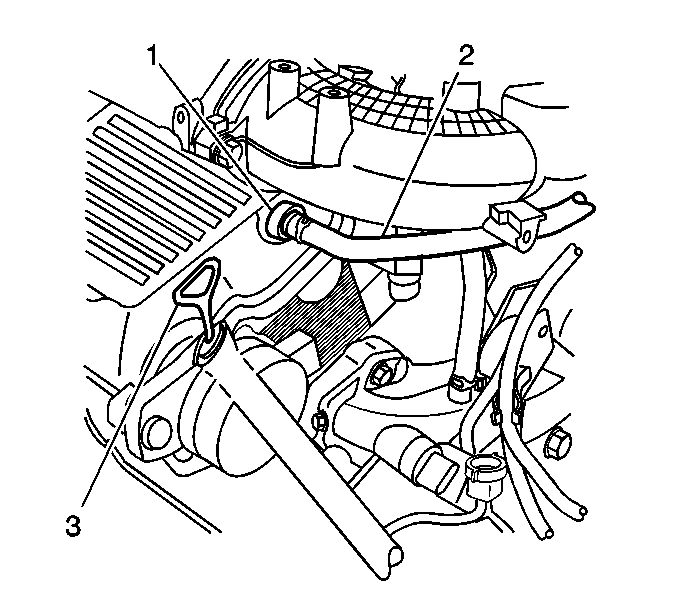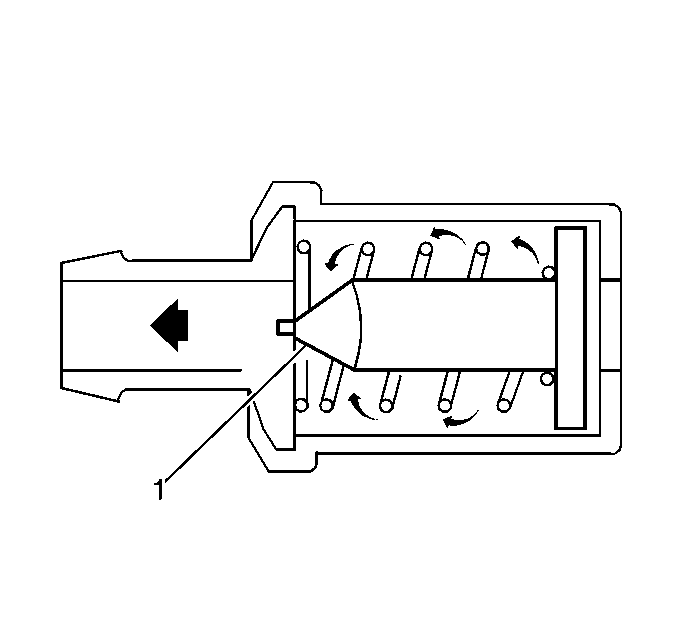The compressed combustion gas which escapes past the piston
rings into the crankcase is known as blowby gas. Blowby gas contains large
amounts of carbon monoxide (CO) and hydrocarbon (HC). The positive crankcase
ventilation (PCV) system prevents the blowby gas from being emitted into
the atmosphere. The PCV system routes crankcase blowby gas back into the
intake system where it becomes part of the combustion process. The PCV system
consists of the following components:
| • | The crankcase vent or air inlet tube |
| • | The air inlet filter or separator, if used |
Operation

The primary control of engine crankcase blowby
gas is the PCV valve (1). The PCV valve meters the flow of blowby
gas according to the manifold vacuum signal.
PCV Valve



